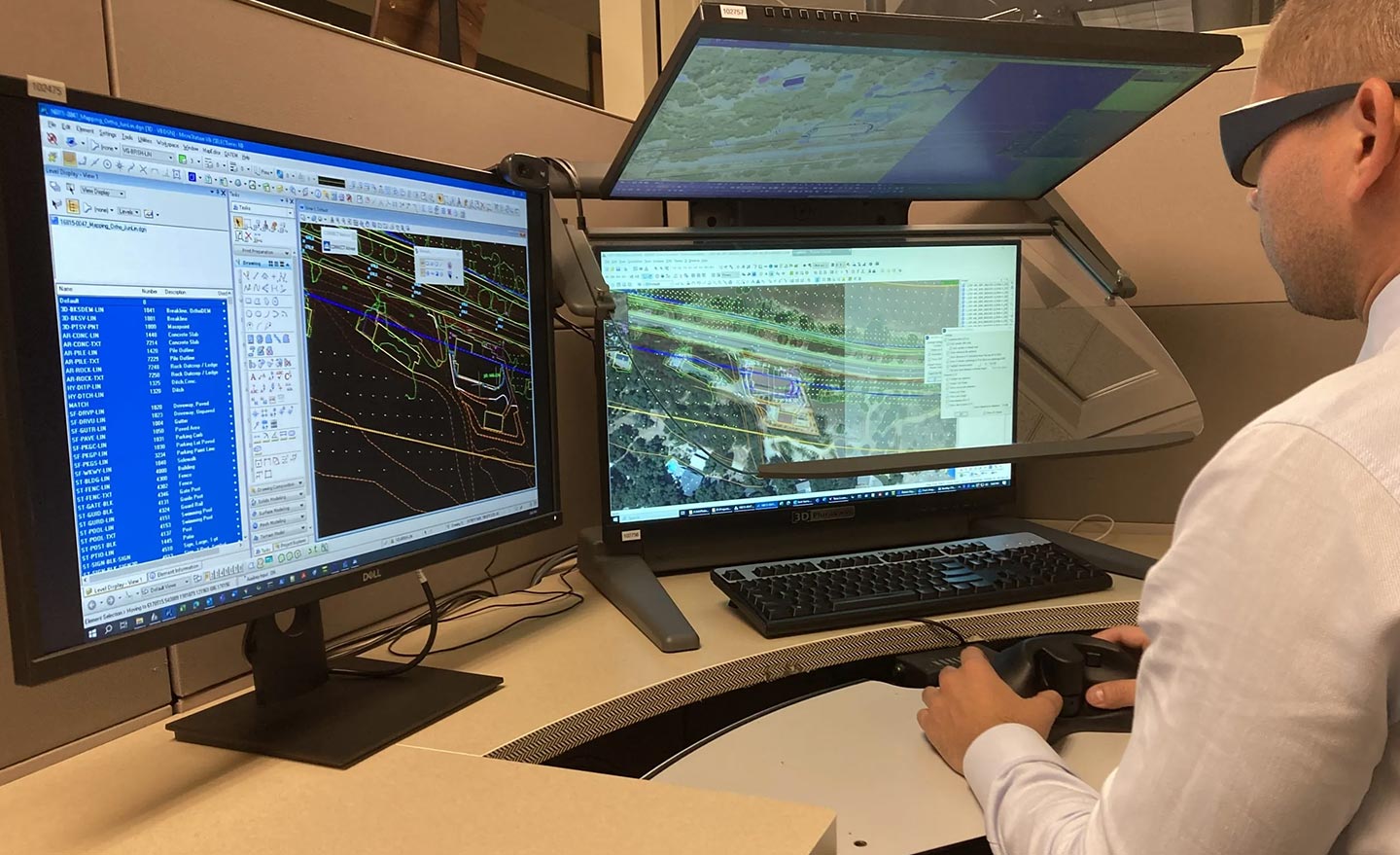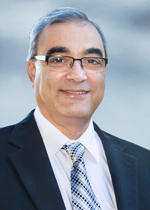LidarNews customer interview with Towill about 3D technology

Practical experience report on the PluraView 3D monitor
Lidar News is interested in how innovative companies and individuals are leveraging advanced technologies for enhanced visualization and improved modeling and design outcomes. For this Q&A Feature, Lidar News Editor Gene Roe interviewes Towill, Inc.’s Chief Photogrammetrist George Maalouli to KELYN Technologies and the 3D PluraView technology from Schneider Digital.
Can you please provide a brief overview of your professional background (s) and experience, particularly with 3D technologies and visualization, and/or a brief history of the growth of the company and its use of 3D technology? Please include an idea of the timelines.

My name is George Maalouli. I am a Certified Photogrammetrist and have been in the Photogrammetry profession for the past 35 years or so. I have been through the technological evolution of stereo photogrammetry since the eighties. Starting with the “Kelch” system using anaglyph glasses, to the optical analog/analytical plotter stereo viewing which is achieved by re-directing each eye line-of-sight to each of the stereo image pair, to the fully digital stereo system using active or passive technique by means of flickering the glasses or the screen at high frequencies (above 100hz) to allow the left and right eye to see the two overlapping images simultaneously, and finally the latest “Beam-Splitting” flicker free stereo display used by PluraView monitors. This latest display technique allows for the highest resolutions at the standard frequencies without any cause of fatigue or discomfort. As the chief photogrammetrist at Towill, Inc. in the Bay area, we implemented the PluraView system and replaced all our NVidia active systems.
Can you provide an inventory of some of the primary 3D surveying and mapping hardware and software that your company currently uses, as well as any other related products? Please include an idea of the timeline of purchases.
The conventional stereo photogrammetry field is somewhat losing ground to some automation in image-based data extraction. However, these automation techniques may work well for elevation extraction, smart planimetric data extraction continue to pose a challenge for automation and are still being carried out by manual stereo extraction. Due to too many issues related to Nvidia-system hardware availability and problems, we decided at Towill in 2021 to upgrade all our four stereo workstations to the PluraView.
We decided to add three systems followed shortly by the fourth and final system. The upgrade eliminated our dependencies on various hardware and software such as Microsoft and Nvidia. The system is very reliable and requires minimum maintenance time. The implementation was seamless and took less than a day once we had all systems in house.
What attracted you to KELYN3D and the 3D PluraView monitors? Did you look at other products? Why did you choose KELYN3D and 3D PluraView?
Around 2014, we implemented a fully digital stereo workflow and added the promising Nvidia active-stereo cheap system. In early 2021, it became clear to us that the NVidia-based system is no longer sustainable and is requiring more and more maintenance resulting in more cost and less productivity. As a Photogrammetrist, I kept abreast of ongoing display technology including stereo display. We decided to take another look at the beam-splitting technology that PluraView offers. As we searched for a better solution, it was obvious that KELYN3D is a better fit for us due to their reputation and their location in proximity to our offices in Colorado and in the Bay area. Yes, it is a bigger investment upfront, but it paid off in the past few years.
How are you integrating KELYN3D products into your workflows? What were some of the challenges with that? What were some of the best practices and lessons learned?
All of our four stereo workstations are equipped with the PluraView systems. These systems are fully utilized for all our stereo extraction processes as well as for the QC of all of our mapping products. It integrates well with our full photogrammetric workflow. Other than the initial setup and calibration, the system has been very reliable and did not pose any challenges. KELYN3D did a great job in supporting the initial setup and during the rare occasions when we called for support. The best lesson for us was the system selection criteria. Choosing the cheapest solution and not looking ahead for the future is not a good business strategy.
Can you provide a brief overview of two or three of the projects where you made use of KELYN3D and 3D PluraView technology? Can you provide any thoughts on time savings vs. other methods? Any thoughts on return on investment?
We use the PluraView system on all our stereo projects, small or large and without exceptions. We executed 100’s or more projects with these systems. A good example that comes to mind is the California Department of Transportation (CALTRANS) projects. CALTRANS continues to demand stereo-based manual data extraction of their products, and most times LiDAR elevation data is integrated in our stereo workflow. LiDAR data is viewed and QC’d in a stereo environment to remove remaining errors that are otherwise missed by the mono-classification alone. Another area we use stereo, is evaluating and integrating into final products our field-collected data to ensure accuracy and conformity to standards. For the ROI, the system’s benefit is clear to us, and it has fully paid for itself in a short time. We expect our system to be fully functioning and fully utilized for as long as the demand continues for high quality photogrammetric data.
What do you see in the future for the use of KELYN3D and 3D PluraView technology on your projects? Are you investigating other advanced technologies that will create new business opportunities?
As long as we have a demand for photogrammetric products, stereo-viewing will continue to be the main driver in our workflow. We recognize and see a shift towards automation with more LiDAR data integration. Stereo viewing will continue to be our main tool for QC and for data completeness checks.